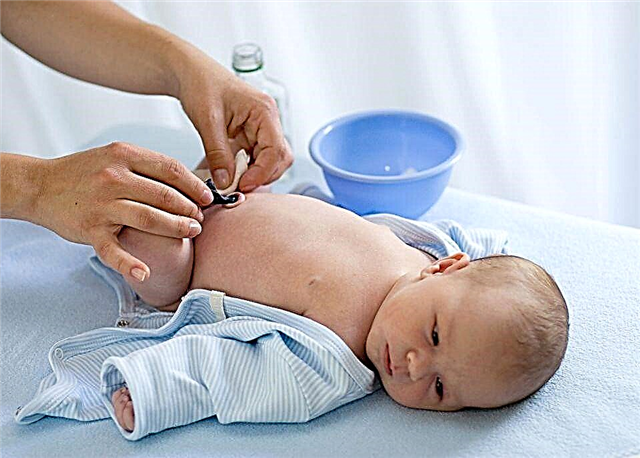
Monocytes are a type of blood cell that belongs to leukocytes. Their presence in the child's blood is important for protecting the child's body from tumor cells, microbes and parasites, as well as for removing dead tissue. For the fact that monocytes renew and cleanse the blood, such leukocytes are even called "body wipers." Why, in the analysis of a child, there can be an increased number of such cells and what should parents do if a son or daughter has increased monocytes?

How monocyte levels are determined
You can find out how many monocytes in a child's blood are from a general blood test. This study shows the total number of all leukocytes, as well as the percentage of their individual types (it is called a leukogram or leukocyte formula).
By assessing the percentage of one or another type of white blood cells, one can judge the presence of an inflammatory, infectious or other pathological process in the child's body. It is on the basis of the results of a blood test with a leukogram that the pediatrician directs the child for additional examinations, taking into account also the clinical picture, past diseases and other factors.

Blood for the assessment of the leukocyte count is usually taken from a finger, a collection from a vein is used much less often. A heel fence is used in a newborn baby due to very small toes. For the level of monocytes in the blood in the test results to be reliable, it is important:
- Bring the child to donate blood on an empty stomach, because food intake leads to temporary leukocytosis. Before taking blood, it is permissible only to drink a small amount of water. It is not advised to consume any other drinks or products, as well as drinking too much, because this will affect the result. If the test is done on a baby, at least two hours should elapse after feeding before a blood sample is taken.
- The child should be calmas emotional stress affects the performance of the blood test.
- The age must be indicated on the analysis form, since this is the main condition for the correct interpretation of the result.
- On the eve of taking a blood test, active physical activity and fatty foods are undesirable. Such factors lead to false leukogram results.
- If the baby is prescribed any medications, this should be reported to the doctor before he begins to decipher the analysis, because some medications can affect the concentration of different types of white blood cells.

What level of monocytes will be elevated
The normal content of monocytes is determined by the age of the child:
- In newborns the number of such white cells should not exceed 10% of all leukocytes.
- From the fifth day after childbirth the level of monocytes rises slightly, but not more than 14% of the total number of white cells.
- By the end of the first month life monocytes begin to drop. For a child aged 1 month, the norm in the leukogram is no more than 12% of monocytes.
- Leukocyte formula in the analysis of children from one to 4-5 years contains no more than 10% monocytes.
- At the age of five 4-6% of all leukocytes are considered the norm. Such an indicator of leukogram is typical for children 5-15 years old.
- In adolescents over 15 years old the level of monocytes normally does not exceed 7%.
If an increased value is found in the child's blood (more than the indicated numbers), this condition is called monocytosis.

Types of monocytosis
Depending on the cause of the change in the leukogram, monocytosis can be:
- Absolute... The number of leukocytes increases due to the greater number of monocytes. This variant of monocytosis reflects the active immune response of the child's body and often indicates the presence of a pathological process at the time of examination.
- Relative... The percentage of monocytes is higher due to a decrease in the percentage of other leukocytes, and the total number of leukocytes may not increase. Such monocytosis is not very informative and often occurs after a previous illness or recent injury, and it can also be a variant of the norm due to a hereditary feature.
We recommend watching a video in which a specialist from one of the Moscow clinics talks in detail about what monocytes are, what they are and why they are needed in the human body:
Causes of monocytosis
A slight increase in monocytes occurs with purulent infections and during the recovery period after colds. Such an unexpressed change in blood in the form of relative monocytosis occurs with teething, severe bruising or trauma. Also, a slight excess may be due to a hereditary factor.
If monocytosis is a symptom of a serious illness, it is usually severe... In case of diseases, the child's circulatory system cannot cope with a large number of pathogens or other harmful particles, as a result of which monocytes are produced in the bone marrow in larger quantities than in healthy children.

A high percentage of monocytes is detected when:
- Rheumatism, lupus erythematosus and other autoimmune diseases. With such pathologies, the body produces an excessive number of leukocytes, among which there are monocytes.
- Infectious mononucleosis. This disease affects the tonsils, liver, lymph nodes and spleen, and therefore affects the composition of the blood. With this acute infection, both monocytes and lymphocytes increase in the child's blood, and abnormal cells called mononuclear cells are also detected.
- Tuberculosis... In the first phase of such a disease, the number of monocytes and lymphocytes decreases, but their level gradually increases.
- Brucellosis... With this disease, which in rare cases is transmitted to a child from a sick animal, the number of neutrophilic leukocytes decreases, which leads to the appearance of relative mono- and lymphocytosis.
- Malaria... With this disease, leukocytosis is observed, so monocytes also increase. Also, a blood test will show a decrease in hemoglobin levels and erythropenia.
- Leukemia... An increase in monocytes is characteristic of monoblastic leukemia (it is diagnosed in 2-3% of children with this pathology), and also occurs in myeloid leukemia.
- Polycythemia... This disease, which affects the bone marrow, increases the production of all blood cells. And although erythrocytes predominate in the blood, the number of monocytes will also be more than normal.
- Infection with toxoplasma and other parasites. If such infections are suspected, the child is referred for special examinations to help identify antibodies to the pathogen.
- Congenital syphilis. With this disease, which the baby receives from the mother during intrauterine development, a blood test will show leukocytosis and a decrease in the number of red blood cells.
- Poisoning with tetrachloroethane, chlorine or phosphorus. Such toxic substances inhibit neutrophils, so the level of monocytes in the blood test will be increased.

In addition, monocytosis is possible when:
- Ulcerative colitis, esophagitis, enteritis and other inflammatory processes in the gastrointestinal tract.
- Fungal infection.
- Infective endocarditis.
- Sepsis.
- Surgical treatment, such as appendicitis.
Symptoms
Monocytosis in children does not show any special symptoms. All clinical symptoms in childhood with greatly overestimated monocytes will be due to the pathology that caused such changes... The child may have fever, joint pain, cough, lesions of the oral mucosa, changes in stool, swollen lymph nodes and other signs of the disease.
In some children, monocytosis is discovered by chance during a scheduled examination. This often happens in the period after a recent cold, or is a sign of an individual characteristic in a particular child. In such a situation, there are no symptoms of the disease.

What to do
A high content of monocytes should be the reason for contacting a pediatrician. The doctor will be able to determine whether the child has relative or absolute monocytosis, after which he will find out the reason for such changes.
As a rule, a slight increase in monocytes is not dangerous, after all, it can be provoked by various factors, including hereditary. If the numbers are high, this is an alarming signal of "malfunction" in the child's body.
A child with monocytosis will be referred for additional tests, as well as examined by specialists. The presence of a large number of monocytes in the baby's blood indicates the activity of the pathological process and its progression, therefore, the cause of such a blood test result should be identified as quickly as possible. As soon as the doctor diagnoses and prescribes the appropriate therapy, the child's condition will improve, and the monocyte level will gradually return to normal.
We recommend watching the release of the program of Dr. Evgeny Komarovsky, dedicated to the clinical blood test:



